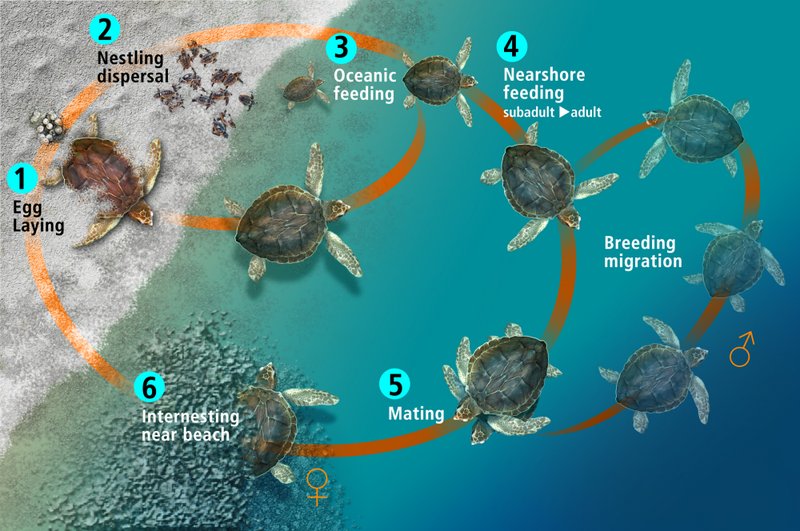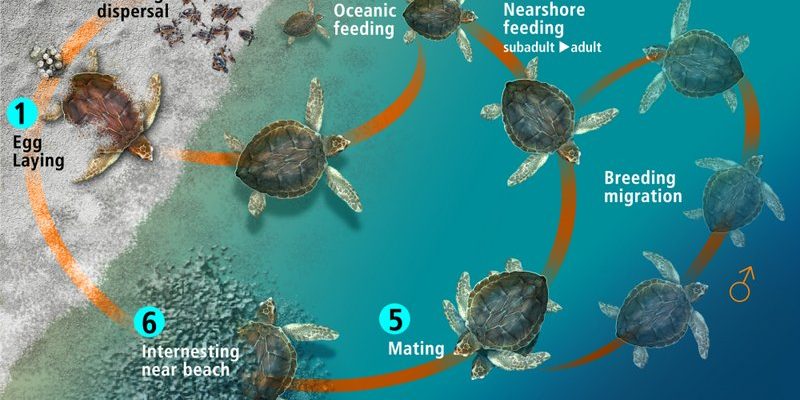
What makes these turtles truly fascinating isn’t just their size but their evolutionary journey that spans millions of years. Just like how technology evolves from clunky first-gen gadgets to sleek modern devices, leatherbacks have adapted over time to thrive in the vast, changing oceans. So, let’s take a closer look at how these ancient creatures have managed to survive and adapt over such a long period.
The Origins of Leatherback Turtles
Leatherback turtles belong to a group called the Dermochelyidae, which first appeared around 100 million years ago. To put that into perspective, dinosaurs roamed the Earth when the first leatherbacks were making their debut. They’ve been cruising the oceans long before many of the species we know today even existed.
Their ancestors likely had a bony shell, similar to other turtles we see today. But here’s where things get interesting: over millions of years, leatherbacks evolved to have a distinct leathery skin instead of a hard shell. This adaptation helps them dive deeper and swim more efficiently, allowing them to access food sources like jellyfish that are often found in the depths of the ocean. Honestly, who doesn’t love a good jellyfish salad?
This evolutionary shift also means they can withstand colder waters better than other turtles. Their ability to maintain body temperature while diving into chilly depths is like having a built-in heating system—a handy feature considering their long-distance migratory patterns.
Physical Characteristics and Adaptations
The leatherback turtle’s unique physical traits are one of the reasons they’ve survived for so long. Unlike other turtles that have a hard, protective shell, leatherbacks have a flexible, leathery carapace made of connective tissue and bones. This design isn’t just for aesthetics; it serves a dual purpose.
First, it allows them to dive deeper than other turtles. Leatherbacks can plunge to depths of over 4,000 feet, which is impressive considering most turtles tend to stick to shallower waters. Their streamlined body helps them swim efficiently, cutting through water and reaching remarkable speeds.
Second, their size provides significant advantages too. Being large means fewer predators, and let’s be honest, it’s hard to snack on something that could weigh more than most of your friends! Nonetheless, they still face threats from orcas and humans, which brings us to another important aspect of their evolutionary story.
Migration Patterns of Leatherback Turtles
If you think your commute to work is tough, wait until you hear about the leatherback turtle’s migration. These turtles travel thousands of miles each year between their nesting and feeding grounds. Some of their journeys can cover over 10,000 miles—now that’s dedication!
They typically nest on tropical or subtropical beaches, like those found in the Caribbean or the Pacific. After months of swimming in the open ocean and feasting on jellyfish, female leatherbacks return to the same beaches to lay their eggs—a behavior known as natal homing. They have an innate ability to return to the exact beaches where they were born, which is nothing short of miraculous.
This long-distance travel is extraordinary, but it’s also fraught with dangers. From fishing nets to pollution, the ocean isn’t always a safe place for them. Their migrations underscore the need for conservation efforts and awareness about the threats they face.
Threats and Conservation Efforts
Like many wildlife species, leatherback turtles are facing some serious challenges. Their population has been significantly declining due to human activities, and it’s a real cause for concern. They struggle against siltation, plastic pollution, and climate change, which impacts their nesting sites.
One of the primary threats comes from bycatch in fishing nets. Leatherbacks often get entangled in fishing gear, leading to injury or death. Additionally, their love for jellyfish puts them at risk since plastic bags can look an awful lot like their favorite snack. Just imagine a leatherback mistaking a plastic bag for a jellyfish—tragic, right?
Fortunately, conservationists and organizations worldwide are stepping up to protect these turtles. Efforts include establishing protected nesting sites, raising awareness about plastic pollution, and creating fishing regulations to reduce bycatch. Every little bit helps, and we can all play a part in ensuring these magnificent creatures continue to thrive.
The Role of Leatherbacks in Ecosystems
You might wonder why conserving leatherback turtles is so important. Well, they play a vital role in the marine ecosystem. As jellyfish eaters, they help maintain healthy populations of these creatures. When leatherbacks thrive, they help balance the ecosystem, preventing jellyfish from overrunning the oceans.
Their presence also indicates the overall health of marine environments. Healthy leatherback populations suggest that their habitats are thriving and that the food chain is intact. Think of them as nature’s indicators, much like smoke detectors in a house. If they’re in good shape, it’s a sign that the ecosystem is doing well.
As we work to protect leatherbacks, we’re also investing in the health of our oceans. It’s a win-win situation where both the turtles and the marine ecosystems benefit!
Leatherback Turtles in Human Culture
Throughout history, leatherback turtles have held significance in various cultures. Some indigenous communities revere them, seeing them as symbols of wisdom and endurance. Their existence is intertwined with local folklore and traditions, emphasizing the connection between humans and nature.
However, this relationship hasn’t always been positive. Historically, leatherbacks were hunted for their meat and shells, leading to a decline in their population. Over time, many cultures have shifted towards conservation efforts, recognizing the value of preserving these ancient beings for future generations.
As more people become aware of their plight, these turtles are seen not just as creatures of the sea, but as symbols of resilience and the need for environmental stewardship. By celebrating their role in our world, we can foster a greater appreciation for them and motivate action to protect their habitats.
Looking Ahead: The Future of Leatherback Turtles
As we look to the future of leatherback turtles, it’s important to remain hopeful yet vigilant. With global efforts in place, such as stricter regulations on fishing practices and commitments to reducing plastic use, there’s potential for their populations to rebound.
Conservation isn’t just the responsibility of governments or organizations; it starts with us—individuals who can make simple choices in our daily lives. By supporting eco-friendly practices and spreading awareness, we help create a brighter future for leatherbacks and our oceans.
So, the next time you imagine a turtle, think of the leatherback’s impressive journey through time and the intricate web of life it represents. Protecting them is not just about saving one species; it’s about preserving the delicate balance of our planet—a mission we all share.
In conclusion, the evolutionary journey of the leatherback turtle is a testament to nature’s ingenuity and resilience. From their ancient origins to their crucial role in marine ecosystems, these majestic creatures remind us of the importance of conservation and the collective responsibility we share in safeguarding our planet. Let’s commit to being part of the solution and ensure that leatherbacks continue to swim in our oceans for generations to come!

